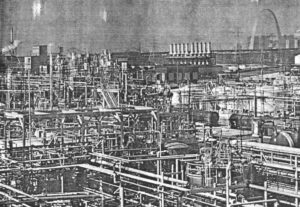Cristine Russell
- 1987

Fellowship Title:
- Risk and how living can be hazardous to your health
Fellowship Year:
- 1987

Proposition 65: California’s Controversial Gift
DAVIS, CA.-It is theatre in the round at the barn-like Wyatt Pavilion on the University of California campus here. But the people on the raised stage are not actors and the audience is obviously not a student crowd. Instead, a phalanx of briefcase-bearing representatives of industry and government. more than 100-strong, have come to hear a 12-mernber scientific advisory panel deliberate about which chemicals cause cancer or birth defects. The play is called Proposition 65, a long-running drama without an ending that is being watched around the world as a harbinger of what can happen when citizens-concerned about the environment but distrustful of existing government and business efforts-take control of toxic chemicals into their own hands. Persuaded by a colorful cast of environmental, consumer. and labor activists, as well as politicians like state Rep. Tom Hayden and his movie star wife Jane Fonda, California voters handily passed Proposition 65 in November 1986. Formally called the Safe Drinking Water and Toxic Enforcement Act, its extraordinary breadth went far beyond existing state or federal toxic control laws.

Your Right To Know What You Breathe And Drink–A New Law Emerges
Editors Note: APF Reporter Vol.11 #3 exsisted only as a photo copy, becuase of this the pictures in this story are of poor quality. Monsanto Company’s three St. Louis area plants use perchloroethylene to make a bacteria-fighting chemical in deodorant soap, produce paradichlorobenzene to make mothballs and use chlorine to make swimming pool chemicals. In the process, the plants discharged 4.4 million pounds of these and 28 other hazardous chemicals into the air last year. Monsanto Chemical Company’s W.G. Krummrich plant in Sauget, Il., across the Mississippi River from St. Louis. Photo: Courtesy of Monsato The company recently filed the emissions numbers with the Environmental Protection Agency in response to a sweeping new federal law that has the potential to revolutionize what the public knows about the toxic chemicals released by American industry into the air, water and land around them. Perchloroethylene in high doses can cause dizziness, even death. It can endanger an unborn baby or pose a threat of cancer. Paradichlorobenzene is an irritant that at high levels can cause liver and kidney

Placing Risk Between Panic and Apathy: A New Industry Emerges
NEW BRUNSWICK, N.J.–New Jersey had a problem. A cancer-causing, radioactive substance was widespread in homes throughout the state, threatening the health of thousands of residents. While state officials initially worried that publicity could cause public panic, just the opposite has happened. Federal workmen load barrels of toxic waste to be disposed. (Photo by Joel Richardson, courtesy of The Washington Post.) Two years later, they are confronting a surprisingly different problem–apathy. Many New Jersey residents have ignored a major health risk that is literally in their own backyards: radon gas that occurs naturally in uranium-containing rocks and soils and seeps into basements. Public hysteria did erupt, however, when state officials tried to dispose of dirt containing radon-emitting industrial waste from an old luminescent paint factory. A government plan to mix the contaminated soil with regular dirt and dump it in an abandoned quarry near rural Vernon, N.J. drew threats of civil disobedience. Angry citizens successfully blocked the action. Why did the public ignore government warnings about the dangers of high levels of natural radon, while panicking

Living Can Be Hazardous To Your Health
ATLANTA–Jimmy and Rosalynn Carter may be getting older but a computer recently told them they are far younger than their actual ages. They are among the first to undergo a new computerized health risk appraisal developed here at the Carter Center of Emory University in collaboration with the federal Centers for Disease Control (CDC) and 20 other public and private health groups. The sophisticated quiz is an innovative effort to tie personal health habits to the latest scientific evidence of a person’s chances of dying. The computer concluded that the former President, who is 63, and First Lady, now 60, are in a sense no older than when they left the White House. His health “risk age” is only 56: hers is 52. Former President Jimmy Carter (Photo by Karl Schumacher–The White House) Their good health is credited, in part, to the way they live. They don’t smoke, stay trim, jog regularly, watch what they eat, drink in moderation. and always try to use their seat belts. “They are both in disgustingly good health,” said
